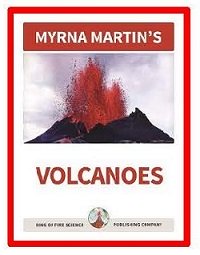location of Yellowstone caldera
Yellowstone National Park
Yellowstone caldera is located in the northwest corner of Wyoming. The area is also known as Yellowstone Supervolcano. The caldera measures 55 x 72 km (34 x 45 miles) in size. It is located in Yellowstone National Park visited by over 3.6 million visitors each year.
Caldera at Yellowstone Park, NPS
caldera features
Yellowstone caldera
The caldera at Yellowstone Park is the site of at least 3 great supervolcano eruptions in the past. It is oval shaped depression in the ground 34-miles by 45-miles. The caldera formed when pyroclastic material exploded out of the volcano’s partly emptying the magma chamber causing the roof to collapse. When the roof collapsed over the magma chamber it created a bowl shaped depression in the ground.
Eruptions in the past
Size of an eruption at Yellowstone Park
Scientists estimate the ash and pyroclastic rocks erupted by the volcano was 1000 times greater than the Mount Saint Helens eruption in 1980. Pyroclastic flows, carried enough pyroclastic material to cover 3,000 square miles.
Lava Creek Tuff
The rock from the flows created the Lava Creek Tuff exposed in the picture above. There were approximately 240 cubic miles of pyroclastic material erupted during the event. This is enough material to cover the entire lower 48 states with 5-inches of ash and pyroclastic rock.


Click for More Information and to Order
Yellowstone hot spot
Hot spot volcano
Heat rising from the interior of the Earth creates the heat beneath Yellowstone. The magma chamber is located between 5 and 10 miles beneath Yellowstone Park. The gigantic plume of hot molten rock rising from the interior of the Earth to fuel the hot spot is estimated to be 400-miles deep.
Magma on the move
Magma moving into the supervolcano
The Yellowstone supervolcano is restless. Thousands of earthquakes occur in the region each year as magma moves in the magma chamber.
How magma heat escapes
Heat escaping through geysers, hot springs and other geothermal features in the park release 50 times more energy than other parts of the Earth. The Yellowstone Caldera is the world’s largest hydrothermal field and this supervolcano is still restless.
